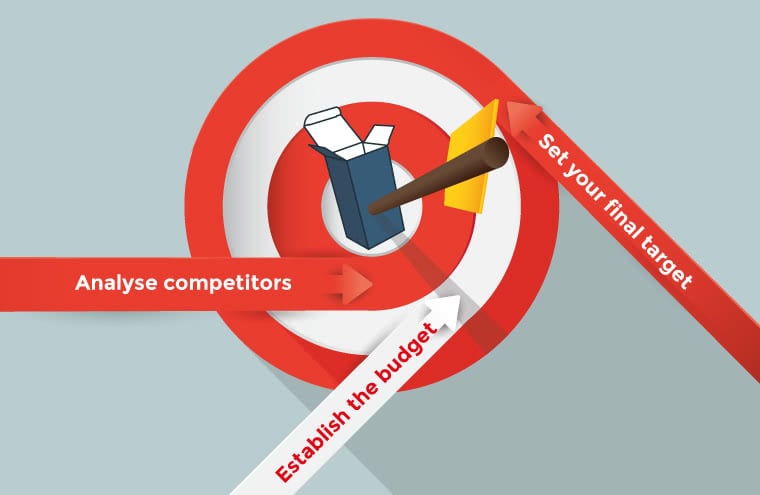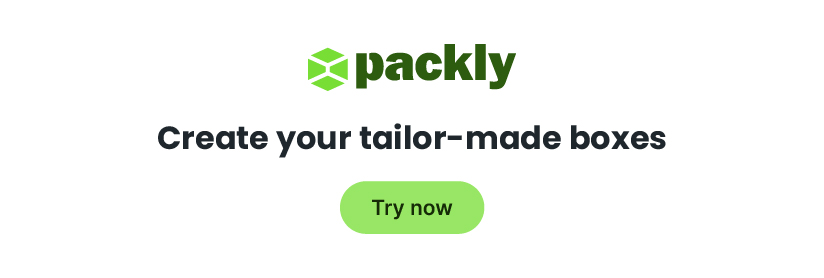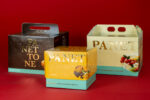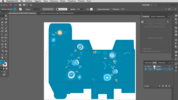Before to commission custom packaging design projects it is necessary to define the basic requirements it will have to suit. Giving the key features to your custom boxes is extremely important in order to, first, make the designer job easier and, second, to be sure to receive a project able to suit your technical and aesthetic needs. But how to choose them?
Our 8 tips are some of the steps useful to define your own marketing strategy and commission custom packaging that beats the competition.
 Define the material features of the product
Define the material features of the product
To realise a custom packaging you need to define, first of all, the physical specifications of the product it will contain. Knowing its dimensions, weight, shape and the type of material it is made of will allow you to understand both its potential and critical aspects. The package has to guarantee, firstly, the protection of its content: the designer needs to get to know with the weak and strong points of the product in order to choose the right box type (closing and opening systems, shape, e.g.) and the material to use. To do that, you have to provide him these basic information.
Fragile products, for example, require the use of strong materials, that are able to soften possible physical impacts, and packages with proper structural shapes that could carefully protect the parts that may be unsafe. Heavy objects require specific closing systems instead, so that the box will not suddenly open or break up because of their weight. In this case, a glued bottom will be certainly better than a snap lock base.
 Establish the immaterial features of the item
Establish the immaterial features of the item
Any product has an intrinsic value that depends on many factors, first of all its industry and product category. Based on them, you can evaluate its economic value, both referring to the production and the sales, the distribution channels and your target audience. Technical and aesthetic features, both of the product and the packaging, are influenced by all these aspects.
A cheap and common object, that you can easily find in any shops, will look in a different way than other technical accessories designed to the specialists: the investments they are intended for will be definitely different.
 Set your final target
Set your final target
If you are thinking about realising a bespoke packaging for your products you have surely a purpose. Establishing clearly and precisely the target you want to achieve is an essential step to avoid creating useless and, at worst, disappointing projects far from what you were looking for.
In every strategy you have to set a target and your design and sale projects have to lead to this final step, whether fast or not.
What really matters is the purpose you had in mind. Don’t mind if you want to increase sales, loyalize the customers or strengthen your brand identity, what really cares is to reach your final target in a useful and long way.

 Analyse the competitors
Analyse the competitors
Benchmarking is a fundamental process in every kind of project and sector, don’t forget it. Unless your product is unique concerning its category (and others) you will always learn something by doing researches and analysing case histories about competitors, whether they belong to the same kind of products or something similar.
You don’t have to study just the box types, shapes or materials: in this step, the most important thing is to understand where that boxes aim to arrive, besides the shelf.
You have to analyse the kind of message they convey, their emotions and inspirations and the placement they want to achieve inside the market: in this way, you can manage your commercial choice in a conscious way, keeping always in mind your final goal.
 Define your custom packaging requirements
Define your custom packaging requirements
Now you can define some of the basic requirements your boxes need. Depending on the product characteristics, you will able to set the dimensions, the kind of material and the conditions of use of the package. The analysis regarding the packaging use and its filling process, transport, distribution and exposure ways of your products will allow you to think at more or less specific design projects.
In this phase, you will have to inform about possible legal obligations that your packaging has to respect: some product industries have specific regulations concerning the packaging creation.
This is the right moment for you to decide if your box will be shown on shelves or proper displays, if it will have maximum or minimum sizes to make the transport or storage easier, and so on.
 Establish the budget
Establish the budget
Create a bespoke packaging has a cost: you need to define how much you want to invest on it, so that the designer will be able to propose concepts in line with your requests and that can be economically achievable. Therefore, it is necessary to establish a maximum budget in order to avoid losing time by creating expensive projects you can’t work on. The final cost of product is a deciding factor: the higher its price, the more you can invest on the packaging.
The box impact on the product selling price sways between 10 and 20%. Setting the budget allows you to choose the kind of materials, production processes and printing techniques that can be used during the design and production phase.
 Create and check different mockups
Create and check different mockups
Choosing the final packaging is not that simple. Before doing it, you have to realise various prototypes, with the same features of the final box, in order to evaluate their graphic and structural aspects.
You can realise printed prototypes, so that you can touch the quality of your packaging, or 3D virtual models, to choose between various graphic drafts. Packly can be your valid ally in this step.
 Do a market test
Do a market test
Once you have chosen the final model and its graphic variants, you have to be ready to purchase small series to verify the effective convenience of your custom packaging thanks to proper test market.
The testing process on final target is a strategic step: during this phase, you will be in time to modify your packaging referring to the received feedbacks.
Conclusions
To commission custom packaging is a delicate task because the information communicated in this step represent the starting point of the whole packaging design project. Clearness and precision are the two keywords you have to keep in mind while talking with a designer: explain your functional and aesthetic needs in a simple but accurate way in order to avoid, as much as possible, misunderstandings and project mistakes.
Are you a packaging or graphic designer? We wrote an article about How to create professional packaging for paper industry in 5 steps that you can’t miss!




 Define the material features of the product
Define the material features of the product Establish the immaterial features of the item
Establish the immaterial features of the item Set your final target
Set your final target Analyse the competitors
Analyse the competitors Define your custom packaging requirements
Define your custom packaging requirements Establish the budget
Establish the budget Create and check different mockups
Create and check different mockups Do a market test
Do a market test








